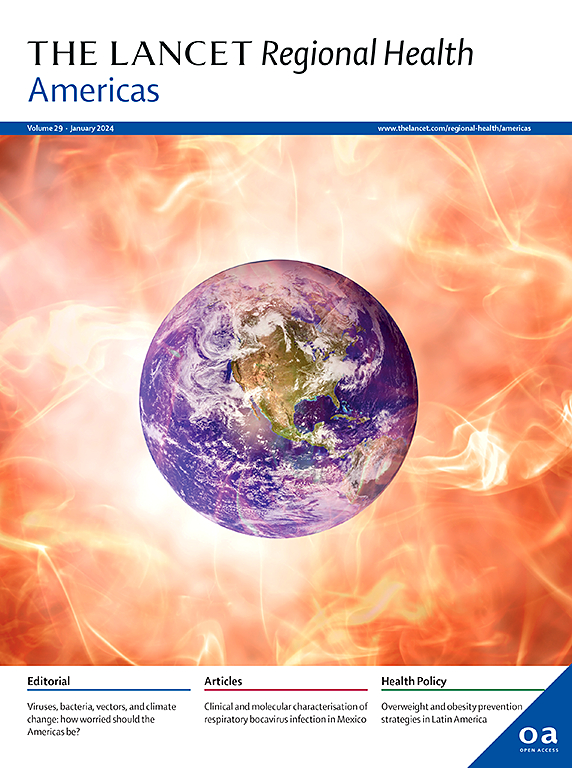Decision tools for schools using continuous indoor air quality monitors: a case study of CO2 in Boston Public Schools
IF 7
Q1 HEALTH CARE SCIENCES & SERVICES
引用次数: 0
Abstract
Background
Indoor environments in schools affect children’s health and learning, but without indoor air quality (IAQ) monitoring, staff have limited data to inform interventions. We aimed to demonstrate the utility of comprehensive real-time classroom IAQ monitoring for informing interventions and investments in schools.
Methods
We created analytical datasets of classroom carbon dioxide (CO2) from a groundbreaking network of 3659 commercial IAQ monitors installed across a U.S. school district. We analysed patterns and trends in 125 school buildings over the 2022–2023 school year. Working with Boston Public Schools (BPS) staff, we co-created visualisations suitable for school decision-making and for research.
Findings
Over the school year, 245 million CO2 measurements were recorded. The average school-day CO2 concentration was 841 ppm (SD: 405 ppm) and the 99.9th percentile of daily maxima was 5080 ppm. Concentrations varied by over an order of magnitude within and between schools. Elevated levels occurred in all buildings, although schools with central mechanical ventilation had lower concentrations and variability than schools without. We show multiple visualisations of monitoring data using threshold-based exposure metrics.
Interpretation
Our academic-school partnership enabled actionable research in support of IAQ improvements. The heterogeneity of CO2 levels across BPS classrooms and between schools underscores the need for continuous classroom-level monitoring and demand-controlled ventilation. Results and protocols are generalisable to other schools and researchers. Our work paves the road for future studies of IAQ and student health and learning.
Funding
Boston University Initiative on Cities, Boston University School of Public Health, National Institutes of Health, National Science Foundation.
使用连续室内空气质量监测器的学校决策工具:波士顿公立学校二氧化碳的案例研究
学校的室内环境影响儿童的健康和学习,但没有室内空气质量(IAQ)监测,工作人员掌握的数据有限,无法为干预提供信息。我们的目的是展示全面的实时教室室内空气质量监测的效用,为学校的干预和投资提供信息。方法:我们从安装在美国学区的3659个商用室内空气质量监测器的开创性网络中创建了教室二氧化碳(CO2)的分析数据集。我们分析了2022-2023学年125所学校建筑的模式和趋势。与波士顿公立学校(BPS)的工作人员合作,我们共同创建了适合学校决策和研究的可视化。在整个学年中,记录了2.45亿次二氧化碳测量。学校日平均CO2浓度为841 ppm (SD: 405 ppm),日最大值的99.9百分位为5080 ppm。学校内部和学校之间的浓度差异超过一个数量级。尽管有中央机械通风的学校的浓度和变异性低于没有中央机械通风的学校,但所有建筑物的浓度和变异性都有所升高。我们展示了使用基于阈值的暴露度量的监测数据的多个可视化。我们的学术与学校的合作伙伴关系实现了可操作的研究,以支持改善室内空气质量。BPS教室之间和学校之间二氧化碳水平的异质性强调了持续监测教室水平和需求控制通风的必要性。结果和方案可推广到其他学校和研究人员。我们的工作为未来室内空气质量与学生健康和学习的研究铺平了道路。波士顿大学城市倡议、波士顿大学公共卫生学院、美国国立卫生研究院、美国国家科学基金会。
本文章由计算机程序翻译,如有差异,请以英文原文为准。
求助全文
约1分钟内获得全文
求助全文
来源期刊

Lancet Regional Health-Americas
Multiple-
CiteScore
8.00
自引率
0.00%
发文量
0
期刊介绍:
The Lancet Regional Health – Americas, an open-access journal, contributes to The Lancet's global initiative by focusing on health-care quality and access in the Americas. It aims to advance clinical practice and health policy in the region, promoting better health outcomes. The journal publishes high-quality original research advocating change or shedding light on clinical practice and health policy. It welcomes submissions on various regional health topics, including infectious diseases, non-communicable diseases, child and adolescent health, maternal and reproductive health, emergency care, health policy, and health equity.
 求助内容:
求助内容: 应助结果提醒方式:
应助结果提醒方式:


